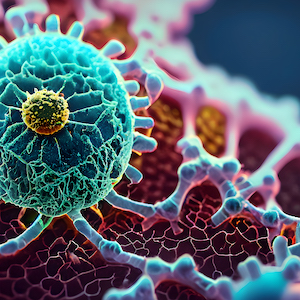Factors predicting mortality among patients with COVID-19 associated hospital acquired pneumonia: insights from a tertiary care center

All claims expressed in this article are solely those of the authors and do not necessarily represent those of their affiliated organizations, or those of the publisher, the editors and the reviewers. Any product that may be evaluated in this article or claim that may be made by its manufacturer is not guaranteed or endorsed by the publisher.
Authors
Hospital acquired pneumonia (HAP) is a severe and dangerous complication in patients admitted with COVID-19, causing significant morbidity and mortality globally. However, the early detection and subsequent management of high-risk cases may prevent disease progression and improve clinical outcomes. This study was undertaken in order to identify predictors of mortality in COVID-19 associated HAP. A retrospective study was performed on all patients who were admitted to a tertiary care center with COVID-19 associated HAP from July 2020 till November 2020. Data was collected on relevant demographic, clinical and laboratory parameters to determine their association with in-hospital mortality; 1574 files were reviewed, out of which 162 were included in the final study. The mean age of subjects was 59.4±13.8 and a majority were male (78.4%). There were 71 (48.3%) mortalities in the study sample. Klebsiella pneumoniae (31.5%) and Pseudomonas aeruginosa (30.2%) were the most common organisms overall. Clinically significant growth of Aspergillus sp. was observed in 41 (29.0%) of patients. On univariate analysis, several factors were found to be associated with mortality, including male gender (p=0.04), D-dimers >1.3 mg/L (p<0.001), ferritin >1000 µg/mL (p<0.001), LDH >500I.U/mL (p<0.001) and procalcitonin >2.0 µg/mL (p<0.001). On multivariate analysis, ferritin >1000ng/mL, initial site of care in Special Care Units or Intensive Care Units, developing respiratory failure and developing acute kidney injury were factors independently associated with mortality in our patient sample. These results indicate that serum ferritin levels may be a potentially useful biomarker in the management of COVID-19 associated HAP.
How to Cite

This work is licensed under a Creative Commons Attribution-NonCommercial 4.0 International License.






